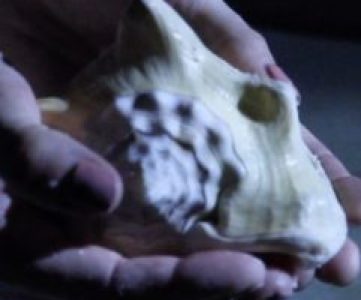TT Journal, Vol.1, ISSUE 2, 19th March 2021
By Ophelia Deroy
Is food art?
Clearly not, if the question suggests that food is called ‘art’ (it isn’t) or receives a social treatment similar to other things called art, like painting. Eating or preparing food are not generally counted among artistic activities, nor have they been counted as such in history. If you open a book on art history, even decorative arts, you are unlikely to find a chapter on food or cuisine.
There are two exceptions, however. The first one concerns a small number of chefs, most often rewarded by Michelin Stars or other ranking systems, who consider themselves as artists or are considered to practice ‘culinary arts’. Exceptionally then, some kind of cooking can be art. The second exception concerns an equally small number of artists, who use food as biological material in their work. Take the Swiss artist Dieter Roth for instance who printed his 1968 poetry journals on bags filled with sauerkraut or vanilla pudding ; or the British sculptor Antony Gormley who built a “Bed” of 600 loaves of bread ; or Sarah Lucas who posed with a raw chicken, out of a butcher shop, strapped to the front of her underpants. There is growing work here, reflecting probably the importance of food in culture and crises : take Emeka Ogboh who is brewing his own black stout beer, changing ingredients and aroma with each site and planning thought-provoking marketing films and posters to challenge the idea of a ““taste of the foreign”, and cultural encounters between Africa and other places. Like with the chefs-as-artists, artists working with food is still a recent exception.
Because they are exceptions, art-works and chefs-artists even reinforce the idea that food is not normally art. This is where philosophers and thinkers just ASK : What is “art” anyway? Can’t we just decide to call food art, or have definitions of art which are more food-friendly? The major problem, I believe, lies less with the definition of art, and more with the definition of food.
What is food? The raw or industrial biological materials used in many food-based art offer quite a small sample of the foods that we eat. They are often selected because of their symbolic value, or their organic disposition to rot and decay. The ‘cuisine d’auteur’ rewarded by Michelin stars is also different from what humans eat all across the world, on an everyday basis. Food, as we know it, comes in a myriad of culinary preparations cooked in more or less stereotypical fashion, using a set of cultural techniques and ingredients. Food is not raw ingredients : It is not the apples, pepper, or carrots we just picked or collected, it is not the raw fish just out of the water. Food is prepared food. True, in recent years, the amount of foods that we prepare ourselves, versus the foods that are prepared by industrial means and reach us packed has decreased, but preparation remains central: it has (just) become more homogeneous and delocalised.
When we talk about the artistic value of food, then, we often fail to take a long view and focus on interesting but recent phenomena. This would be equivalent to discussing pictorial arts with only a concern, say, for street art graffitis made with spray paint – which appeared in 1949.
Food as humanity has known it for millenaries is what appears on the table, the floor, the mat or any place where eating happens, and defined by culinary preparation. It is roast, stews, breads, soups, salads. One way to say it is to see that food is made of dishes: Pick an apple and eat it, it is not a dish, and not food. Slice it on a plate, this becomes a dish: A simple one, but a dish nonetheless : the ingredients have been prepared in a certain way to be consumed.
The long view makes a big difference: it tells us not just that food counts as art, but that it is one of the most ancient forms of art that humanity has developed. In this respect, it should figure along with cave paintings and carved bones, showing the emergence and distinctive presence of artistic concerns in humans.
‘Artistic concern‘ is seen in humane-made objects when there is a care for properties that have no utilitarian value, but find value simply in being experienced, and what this experience can unleash. Artistic concern does not require individual originality, as the more recent, narrow sense of ‘art’ wants. Artistic concerns does not require museums, or “art for the sake of art” only, and shows up in objects that also practical or social utility,
Isn’t food only about utility: nutrition (or social bounds)? Most of the preparation that goes into turning raw ingredients into food is indeed to preserve or enhance the nutritious properties of food. Cooking, slicing, chopping, facilitate the digestive process for instance. Smoking and fermenting enable the conservation of food.
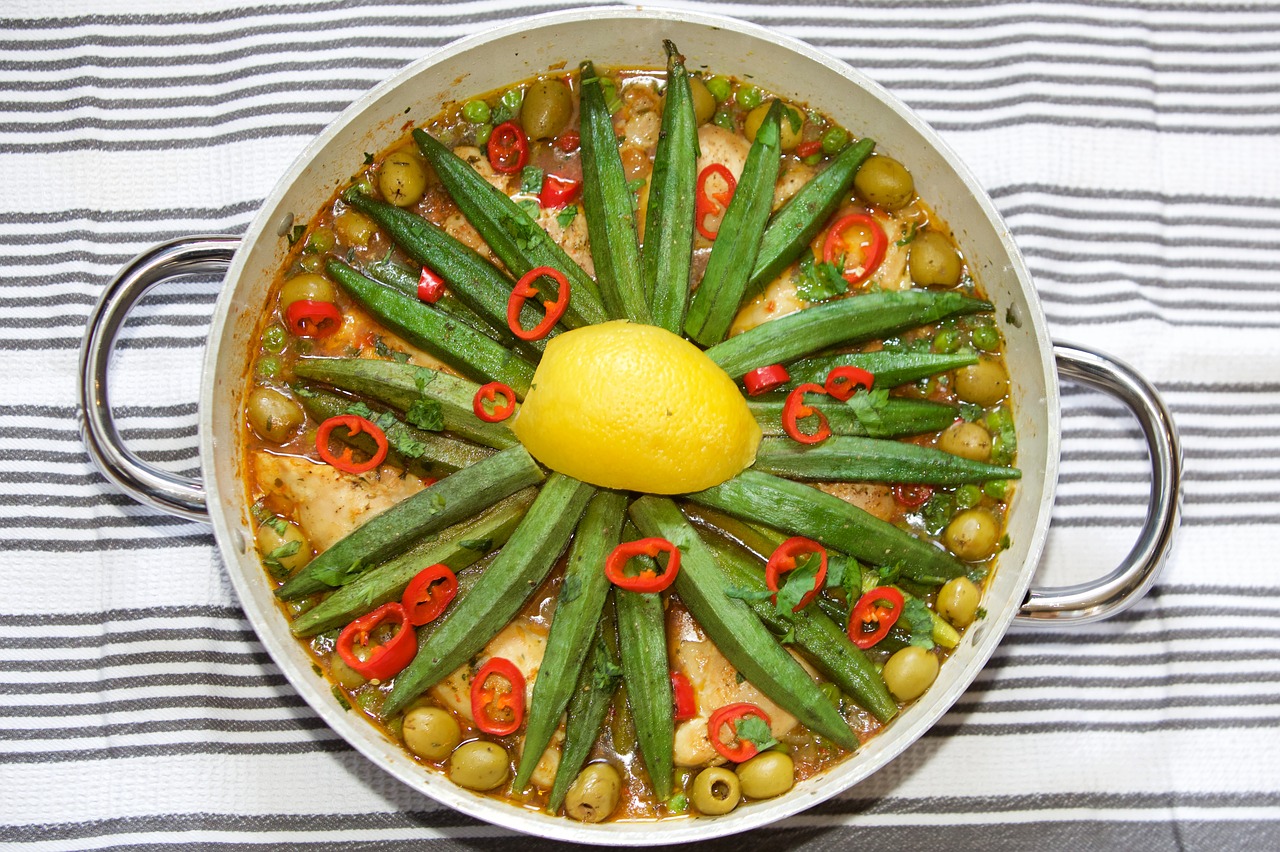
A lot of culinary preparation is also caring for the taste, or rather flavour (the combination of texture, taste and smell). To defend the artistic credential of foods, many go down the taste or flavour route : food is art because it tastes great, or interesting. Isn’t the experience of flavour as rich, emotional or thought-thought-provoking as a visual experience? It can – don’t read me wrong – but the problem here is that it is difficult to separate taste or flavour and nutritious value. Except in situations of food deprivation, where we can be motivated to it even food that does not taste good (or even food that tastes foul), the flavour of the food is what motivates us to eat and keep eating it. Food-specific satiety is here a telling mechanism showing how ‘tasting good’ and ‘satisfying a nutritious need’ are connected: When we had plenty of chocolate, it does not taste that good anymore, which motivates us to turn to something else that has a different flavour (and, eventually, nutritious properties), for instance, cheese. The flavour of a given food gets less enjoyable as we ingest more of it.
Flavour properties are also indicative of the nutritional content of foods, with one can translate as the utility of food. Something that tastes sweet will have sugars in it. Something that smells of cooked meat will have proteins in it. Unless we are back to sugar-free sweet drinks, and dishes crafted by chefs to surprise our taste buds, we learn about which nutrients to eat from how things taste and smell.
“Food is art because of how it tastes” is not jut challenging : it misses a central aspect of human foods : Its visual aspect. Humans universally curate the way prepared food visually appears. Why it is more clearly disconnected from utility and nutrition is that many differences in how food looks brings no difference to the nutritional value of the dish. Eating a piece of fish next to a piece of rice and a small black seaweed has the same nutritional benefit as eating the three ingredients piled up as a sushi. Yet many prefer the later for its experiential value : this shows an artistic concern.
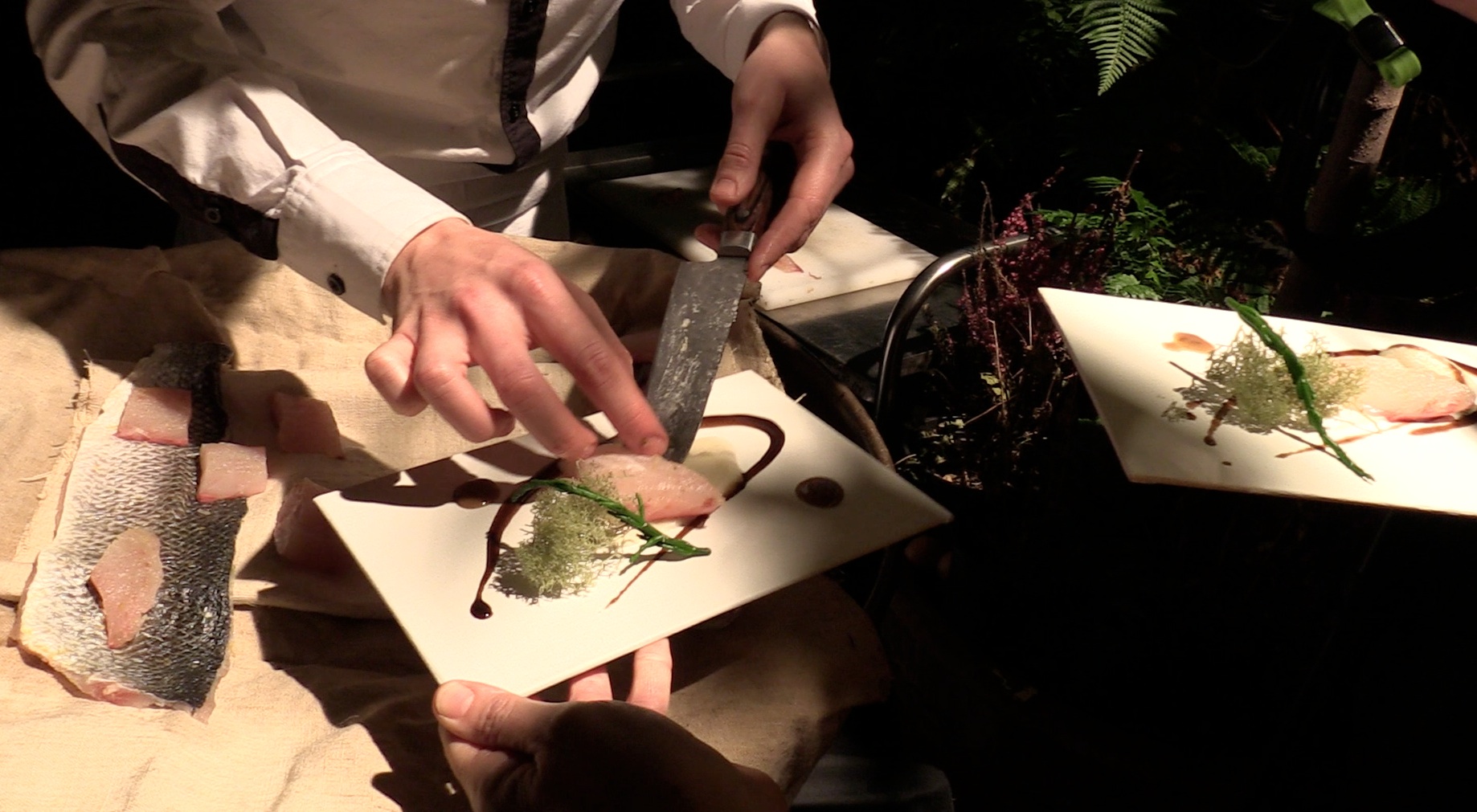
Icelandic Journey: THE FISH, UNEARTHED FROM THE BLACK CHASM
Concern for how food looks is visible at several levels : in plates and containers whose pretty, elaborate shapes or decorations are not necessary to their function (food would taste the same and be as nutritious in flat irregular plates, yet we see decorated, polished plates, shaped in geometrical forms, everywhere from very early times) ; in the spatial arrangement of the cooked ingredients on the plates (food would be as nutritious if it was not organised in layers, juxtaposed, aligned, assembled to form certain geometrical or biological shapes). Finally artistic concern shows in the visual properties of each prepared dish or component: the shape in which a vegetable or piece of meat is cut, the colours it is given by cooking or spices, the shine it has from the sauce or glaze.
Caring for the way food appears exists for Kanaks in New Caledonia, for Japanese, Norwegian, Mexicans, Kenyans…. – the list goes on to include all cultures on the planet. It is manifest from a very early time in human history, where we find first evidence of decorated plates and pots. It seems also distinctively human: non-human animals do not invest time or effort in the visual and spatial arrangement of the foods, for the sake of how food looks. At least I have never seen a dog or a bird arrange bones and grains in a certain way, before they eat it.
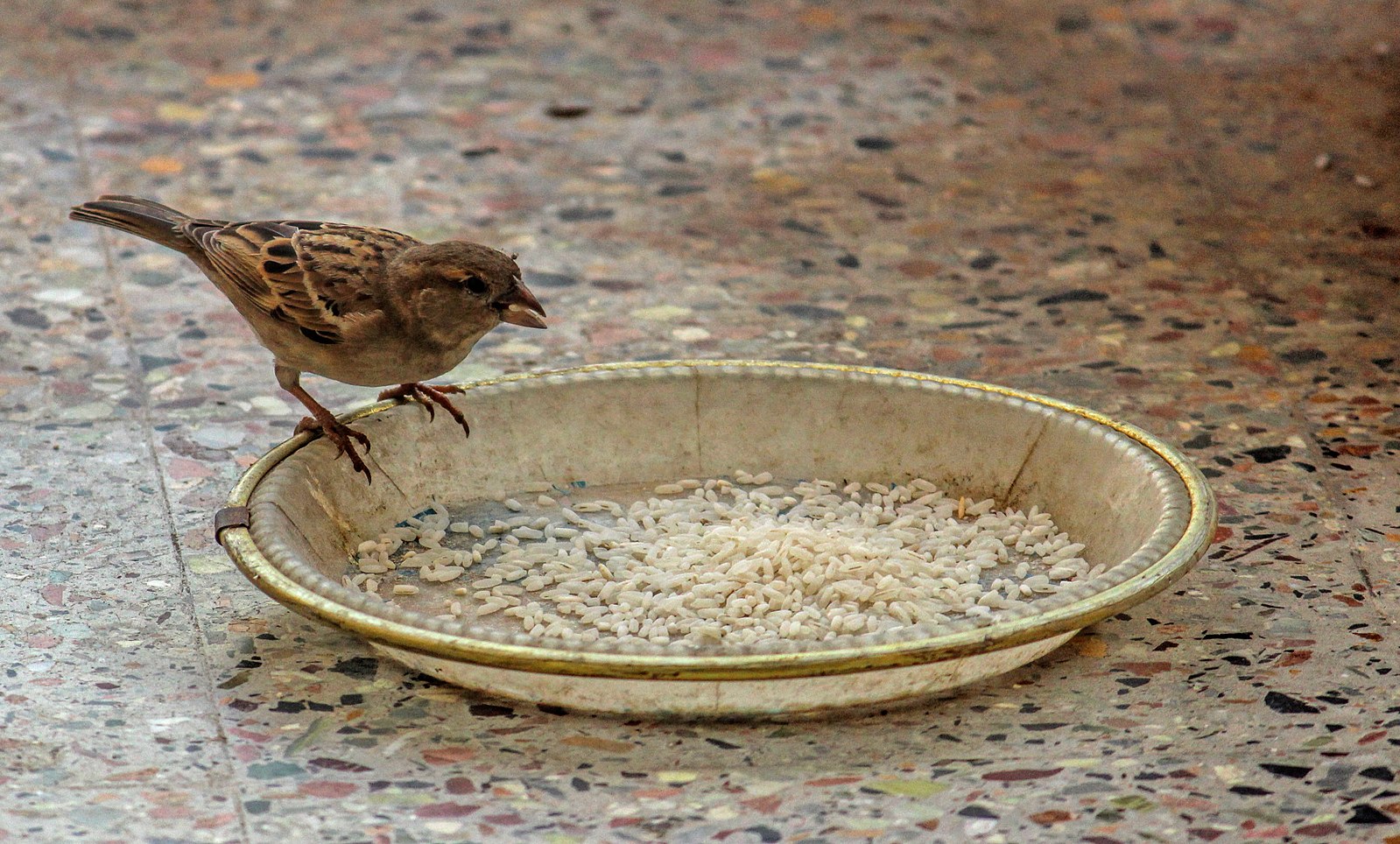
Is it visuo-centric? We enjoy visual properties of food. But we also enjoy how they taste. So why would one, rather than the other, be candidate for our ‘food as art’ question?
There is no ‘satiety’ on food visual properties, while there is a mechanism that connect taste to satiety, and therefore nutritional regulation. We are motivated by the experience of visual properties of food independently of food consumption. Take the new social media frenzy for food pictures on Instragram for instance : Food is one of the 10 most popular hashtags on the platform, with #foodporn for instance counting at the moment this paper is written more than 255 millions posts, and #food counting 434 million posts.


Food posts on social media are not like still life: We look at them not because they are interesting representation of food, we still look at them because they show real, edible foods that look good.
But isn’t it true that, like in the case of flavour, the visual properties of foods (especially colour) will be a good guide to the nutritional value of the food? The sight of food elicits anticipatory responses, such as salivation, changes in heart rate and insulin levels. It also triggers a desire to eat. The colour red makes us expect sweetness in a dish or drink, and makes us taste a red died drink as sweeter than a green died drink that contains the same amount of sugar.
Still, many visual properties given to foods during presentation depart from informativeness : they are arbitrary, and their differences tell us no more or no less about the taste and nutritive value of what we are about to eat. If a carrot is presented in round slices or small dices, it tells us as much about the fact that we are about to eat carrots. Yet we prefer different shapes for different dishes. For people who have experiences with kids, they will know that preferences for funny or interesting looks emerge early, and allow for strategies to make kids eat their greens.
The list goes on: putting the meat in the middle of the plate for instance, as often done in Western cuisine, makes it perhaps easier to identify the important source of protein in the dish, but whether veal chops are aligned or arranged in circle on top of the green beans will not make this identification easier or worse. The shape and colours of plates and containers are also often independent of food categories or type of nutrients. Some visual arrangements of food even reduce our capacity to identify nutrients : Sauces, spices, colorants, rolls, are visually very interesting but make it actually more difficult to know what we will be eating.
As much as actual preparations provides an interpretation of a given recipe, the visual properties of the preparation also provides an interpretation of the dish : Either by conforming or by variation. I know I said we should not look only at recent trends, but they help here make the argument : look at how chefs and cooks bring attention to their visual interpretation of the classic looks of dishes by serving deconstructed burger or serving a soup presented as an ice-cream. Now get rid of the individual originality, which I said is not necessary, and you find many cases across times and cultures that show the same. One of my favourite example is the Japanese Kaiseki where plates and types of adornment changes according to the season and the foods being served. The physical properties of the plates also change in order to reflect the connection between the food and the seasons, for instance with icy plates being served in summer, along with flowers, and warm dishes in winter.


Winter and Summer Kaseiki
Old cookery books and drawings show that the presentation of the food was also very important in medieval settings. The search for colour was prioritised over flavour: Yellow (gold and saffron) and green (a high ranking colour on coats of arms) would have been used to demonstrate social distinction. Some cooks would try to make the animals that they served look like they were still alive, often retaining the animal’s fur or feathers for this very purpose. Gold leaf might be used to decorate the animals for the king and members of the royal court.
But if we like how food looks, for the sake of it, what difference does it make that it is actual food – that we can eat. A cooked mushroom on a plate looks the same, were we to eat it or not. Yes, and no.
The most surprising thing is that visual preferences are food-specific. Looking in more details, with the tools of experimental science, we can show that what we visually like in “real” foods that are meant to be eaten is different from what we like in the mere visual displays of other objects, that are not meant to be eaten. The way we like to see the apples we are going to eat is not the way Cezanne shows them to us – even if he had shown them cooked or sliced.
In our collaborative work with the chef and food influencer Charles Michel, the designer Bettina Piqueras-Fiszman, and the visionary Oxford gastrophysicist and psychologist Charles Spence, we have started to unveil what I think is key to the universal artistic concern visible in food presentation. As humans, we not only go the extra-mile to make food look a certain way that we enjoy or will tell a story, or something about the culture or the moment. We go that extra-mile for foods differently than the way we go to decorate walls, weapons, canvasses, our ourselves. Evolutionary psychologists sometimes talk as if visual preferences were not only universal but also domain-general : we like symmetry for instance. What our experiments suggest is a more nuanced story : while symmetry on the canvass is more visually appealing, we see for instance that a certain degree of asymmetry in the plate is more visually appealing. If you have to eat them, you will prefer to see 3 or 5 scallops on your plate rather than 4, while 4 lends itself more easily to symmetry. Other experiments and social media also shows that we like foods to be presented ‘facing’ us, while there is no such preference in visual arts.
Like for other matters of artistic appreciation, there are cross-cultural differences and individual differences There would seem to be no reason, a priori, why one should expect that what looks nice to a North American diner would necessarily appeal equally to an Italian or Japanese diner. Such differences are also part of what art is. What remains true then is that food, through this extra concern for how it looks, may be one of the oldest “art-instinct” to be shown by humans. As art-making and art-appreciating species, we have very early on enriched our utilitarian need for nutrition with a cultural appreciation of ‘utility-free-but-experience-rich’ visual properties of foods. This deeply-rooted facet of our humanity – pushed to some extreme visibility with chefs, and social media – remains true of our daily dealings with prepared foods – from laying biscuits on a plate, to assembling a sushi, folding a flat bread, or adding parcel to a dish. In all of this, we celebrate our humanity.
REFERENCES
Fairhurst, M. T., Pritchard, D., Ospina, D., & Deroy, O. (2015). Bouba-Kiki in the plate: combining crossmodal correspondences to change flavour experience. Flavour, 4(1), 22.
Spence, C., Piqueras-Fiszman, B., Michel, C., & Deroy, O. (2014). Plating manifesto (II): the art and science of plating. Flavour, 3(1), 4.
Spence, C., Smith, B., & Auvray, M. (2015). Confusing tastes and flavours. In Matthen, M. & Stokes, D. (ed) Perception and its modalities, Oxford University Press, Oxford, pp. 247-274.
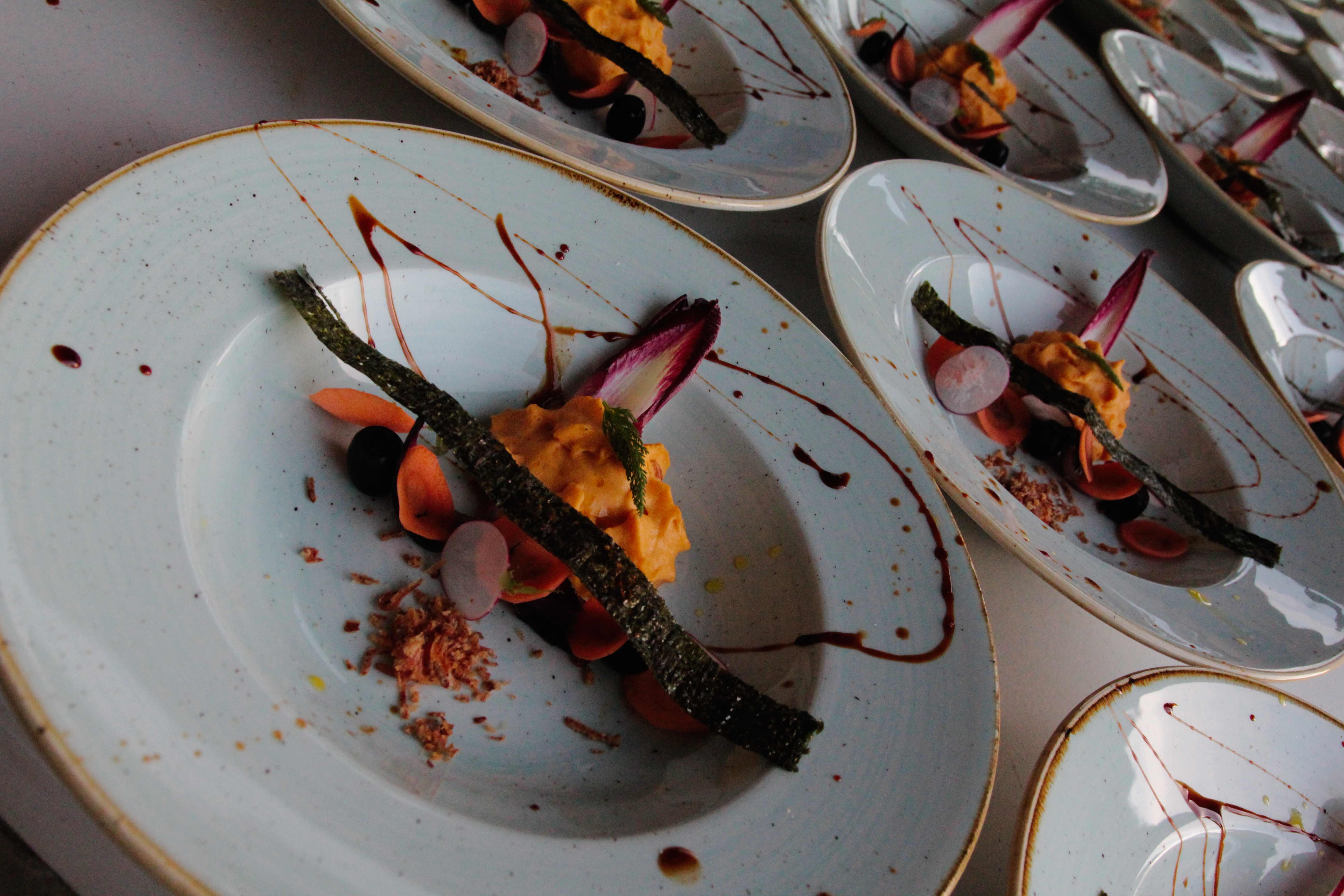
Journey to the Interior, with chef Ben Spalding
Prof. Dr. Ophelia Deroy holds the Chair in Philosophy of Mind, at the LMU, and is a member of the Graduate School in Systemic Neuroscience (GSN) in Munich. She is the former deputy director of the Institute of Philosophy at the University of London, where she also held a research position. She specialises in philosophy of mind and cognitive neurosciences, and has widely published on issues related to multisensory perception and social interactions, both in philosophical and scientific journals. Her research looks more particularly at aspects of experience and thought which challenge individuals’ capacity for rational justification or even reflective awareness – such as arbitrary inclinations to connect sensory dimensions, or cognitive biases. She is an active promoter and a leading advocate of stronger connections between philosophical and scientific approaches to the mind. Her work is frequently broadcast in national and international newspapers, and she is regularly consulted by institutions and the media regarding the relevance of philosophy for scientific debates.
